Don't wanna be here? Send us removal request.
Text
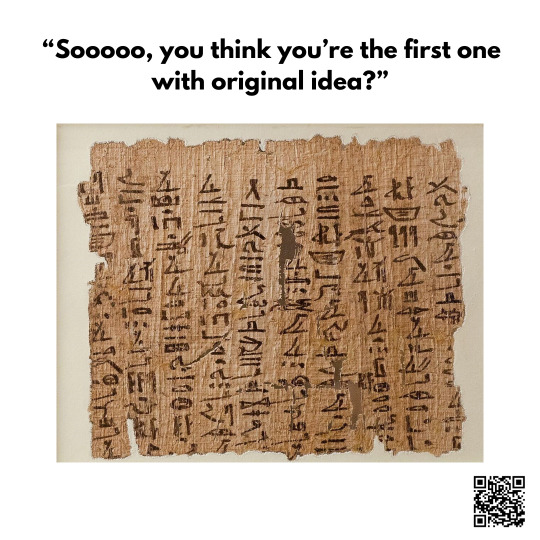
The world’s first dictionary was in Chinese, 100 AD.
The world’s first fantasy story involved man shipwrecked on an island inhabited by a giant serpent with a beard who was able to predict the future, published in Egypt, 1950 BC – 700 years before Ramses II.
TRUE HISTORY by Lucian of Samosata, 200 AD, was an adventure in outer space.
The world’s first novel, CYROPAEDIA, was published in 360 BC, which was the life of Cyrus the Great.
History’s first joke book, FOREST OF JOKES, was published in 200 AD – and you can get a copy at no cost as a download from your local library.
👉Learn more: http://bit.ly/3aFkXdG
0 notes
Text

… it was not until 1967 before women in Toronto could show a ‘bit of leg.’ And for the historian, note the horse-drawn wagon in the background and, in the foreground, is an automobile that was a lot older than a 1967 model.
👉Learn more: http://bit.ly/3aFkXdG
0 notes
Text
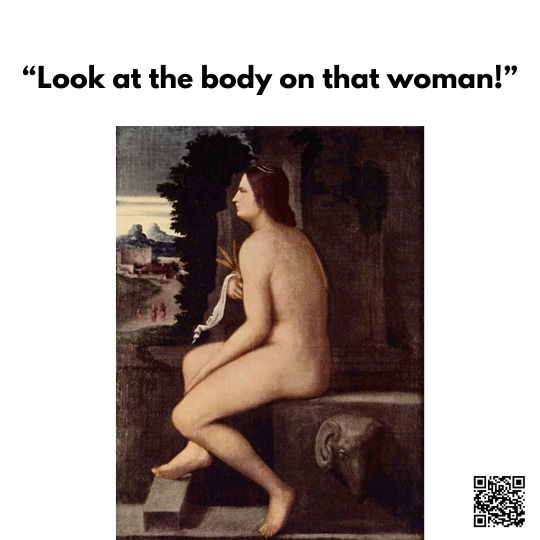
One of the great painters of the Venetian was Giorgione. Though he died very young – at 33 in 1510 – his artwork, particularly nudes, are still legendary.
In a rather rude discussion with some artists of his day, Giorgione was told that a painting could never surpass sculpture because a statue would be revealed in 360 degrees of vision.
Not so, Giorgione replied. So he painted a nude reflected in a lake, a mirror and a breastplate showing the woman in 360 degrees of vision.
Today, this is called a Fourth Panel.
👉Learn more: http://bit.ly/3aFkXdG
0 notes
Text
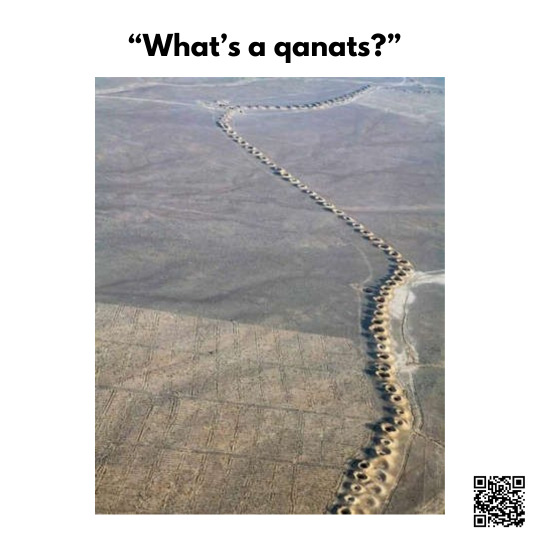
Next time someone tells you ‘ancient’ people were ‘Oh, so primitive!” Say, ‘Not so fast! Ever hear of qanats?” Moving water across the desert is hard, but it has to be done. What the Persians did was build qanats. By hand! Qanats transported water beneath the surface of the desert. This saved on evaporation, and the ‘holes’ you see are to make sure the underground workers could breathe. There are some qanats as long as 30 miles. … and keep in mind that the level of the qanat had to be constructed at a downward angle so the water would flow toward its destination. They were an engineering marvel of their day, 3,000 years ago – because if the water moved too slowly, it would stagnate. If it moved to fast, it could erode the qanat tunnel walls.
👉Learn more: http://bit.ly/3aFkXdG
0 notes
Text

On February 2, 1884, The Electrical World reported …… Some malicious wag at Providence, R. I., has been playing a grave practical joke on the undertakers there by summoning them over the telephone to bring freezers, candles, and coffins for persons alleged to be dead. In each case, the denouement was highly farcical, and the reputed corpses are now hunting in a lively manner for that telephonist.
👉Learn more: http://bit.ly/3aFkXdG
0 notes
Text
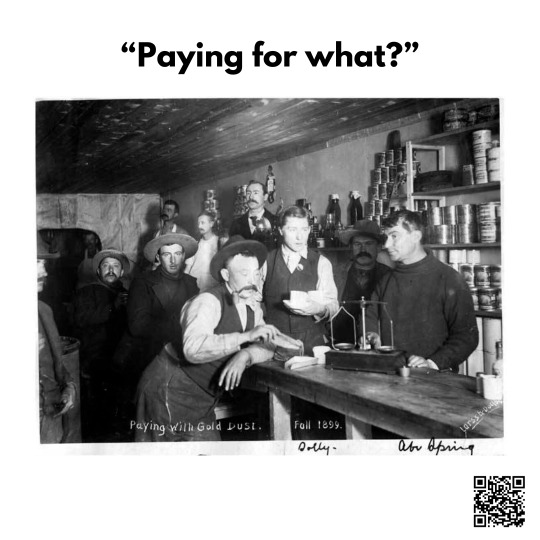
What’s wrong with this picture?
I guess, if it were in a Hollywood movie, you’d buy it. But, in reality, not so much. First, yes, argonauts – the term for gold rushers coined from Jason and the Golden Fleece’s men who sailed on the Argonaut – did pay for drinks with gold dust.
But this is not a saloon.
It is a general store. During the Alaska Gold Rush, if you had gold, you put it in a bank and had credit ‘on the book.’ Then, whenever you ‘bought’ something, the store ‘charged you’ by recording the ‘sale’ on their book and took the ‘money’ out of your account at the bank. Or you got paper dollars printed by the bank – called scrip or flickers – and used those paper dollars to buy things.
Rarely did you ‘buy’ anything in a store with gold dust – unless you were doing it for a photographer.
👉Learn more: http://bit.ly/3aFkXdG
0 notes
Text

In the ‘Good Old Days’ of the 1800s, this was the new-fangled way to wash your clothes.
Then along came the ‘washing machine.’
It – in all its patented form – was so popular women would stop doing laundry by hand!
But why spend the money to buy a washing machine if you could just walk the load down to the street to a laundry?
So women stopped washing clothes by hand. But, to make sure you got BACK what you TOOK to the laundry, you made a list.
To this day, the term “laundry list” is what you need BACK from whatever store you are going to.
👉Learn more: http://bit.ly/3aFkXdG
1 note
·
View note
Text

“A Roman fork?!”
Actually, it is.
What makes it unusual is that forks have been around since, well, the time of the Romans. They were first used even earlier, in the Byzantine Empire. (In those days, spoons were made of cow horns, wood and brass.)
What’s the big deal?
During the Middle Ages, the fork was ridiculed by royalty so, as it is today, people stopped using forks.
Until the 18th Century. And most of use them today. Some people even use them for tacos, hot dogs and hamburgers!
👉Learn more: https://bit.ly/3u6kL4V
1 note
·
View note
Text

Back in the good old days – the 17th Century – There was a legal way to punish gossipers and slanderers from, well, spreading gossip and slander. It was called a brank. If the transgressor was a woman, she could be leashed in what was called a “scold’s bridle.” And just make sure the person didn’t speak, a sharpened spike was installed in the brank. Branks were usually only permitted for 24 hours.
👉Learn more: https://bit.ly/3u6kL4V
0 notes
Text

Well, yes, if you believe the residents of the village of Shingo on Honshu Island in Japan. And, again, according to them, he is buried there. Supposedly, in 1935, Christ’s last will and testament were discovered on “ancient scrolls” in the village. (The scrolls were destroyed during the Second World War, so there, as they say, “went the original documents.”) Supposedly – again – the man who died on the cross was the brother of Jesus. The ‘real Jesus’ fled across Siberia and then Alaska and ended up in the village of Shingo where He died at 106 years of age. You can visit the tomb of the real Jesus Christ – along with the 40,000 other people who make the pilgrimage each year.
👉Learn more: http://bit.ly/3aFkXdG
0 notes
Text
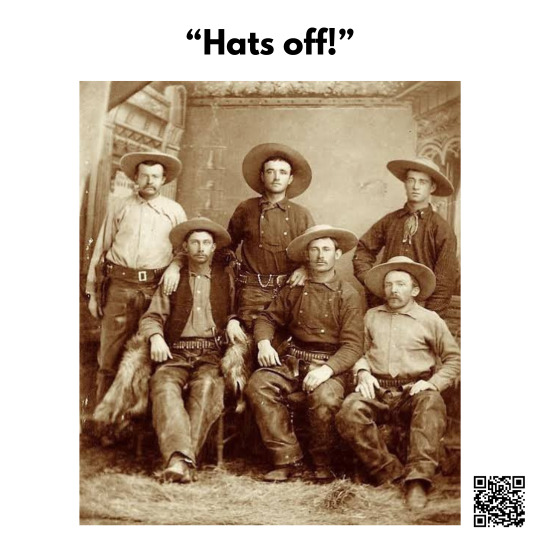
In the ‘good old days of the cowboy’ – which were not necessarily ‘good’ but were certainly ‘old’ – placing your hat on your bed brought bad luck and sickness and sometime death. Why? Because it was believed that on the trail the hat picked up dust, lice, fleas, grime, and all manner of infectious bacteria you would breathe in all night.
👉Learn more: http://bit.ly/3aFkXdG
0 notes
Text

The term “Big Cheese” is centuries old.
Initially the word for “cheese” was chiz. The word was a mixture of English and Urdu from India. In Urdu, the word means “thing.” In England, the word morphed to “big thing,” or something that was popular.
It took on another meaning in 1802.
Why?
In 1802, Cheshire, Massachusetts, sent President Thomas Jefferson an unusual gift. It was a 1,235 pound wheel of cheese. This Cheshire Mammoth Cheese wheel was made from milk from every cow in the community and was emboldened with the Jeffersonian phrase, “Rebellion to tyrants is obedience to God." It gave birth to the expression “The Big Cheese,” which means the most important person in the organization.
👉Learn more: http://bit.ly/3aFkXdG
0 notes
Text
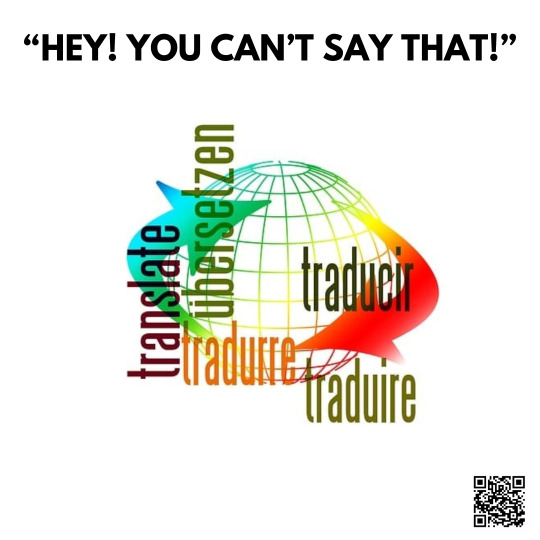
In France, “Big Mac” translates as “big pimp.” “Body by Fisher” in Belgium translates as “corpse by Fisher.” Parker’s Jotter pen in Latin countries translates as “jockstrap.” The Chevy Nova, in Spanish, translates as “won’t go.” In Mexico, the Ford Caliente translates as the Ford streetwalker. When Coca Cola tried to translate its slogan with Chinese symbols … …it came out “Bite the Wax Tadpole.”
👉Learn more: http://bit.ly/3aFkXdG
0 notes
Text

In addition to being a superb swimmer and actress, her claim to fame today – she was born in 1886 and died in 1975 – is changing how women could dress in public.
In the early 1900s, women on the beach were expected to wear dresses and pantaloons.
Kellerman fought that demand. She invented the one-piece bathing suit and wore it publicly on Australian beaches.
The one-piece swimsuit for women caught on and you rarely see a woman on the beach today in pantaloons.
👉Learn more: http://bit.ly/3aFkXdG
0 notes
Text

Antoine-Joseph “Adolphe” Sax invented – (You got it already!) the saxophone. It is surprising he lived as long as he did – 1814-1894 – because he was a master of disaster. He almost died from more than a handful of freak, life-threatening accidents including being hit on the head with a brick, swallowing a needle and mistakenly drinking sulfuric acid. But he did invent the saxophone, which achieved fame as a military instrument. He also invented the less popular saxtuba, saxhorn, and saxotromba.
👉Learn more: http://bit.ly/3aFkXdG
0 notes
Text

All civilizations have their gods, saints, and protective spirits.
These are the deities who represent the realities of the universe: wind, travelers, pregnancy, and indecision.
But there was one god who did not ‘make the cut’ for the Greeks: Seth.
Seth was the Egyptian god of organized chaos. The Greeks could not comprehend the concept, so Seth was left out of the Greek pantheon of gods.
Which was too bad because we all know what organized chaos is. Every job is organized chaos and it is surprising to many of us that anything actually gets done where we work.
👉Learn more: http://bit.ly/3aFkXdG
1 note
·
View note
Text

When you make something illegal, all you do is raise its price. Marijuana smokers in states where it is illegal are still smoking marijuana. All those states are doing is running up their own legal bills prosecuting people for something that is legal across the state line. You solve problems by using the problem to solve itself. In Alaska, this is known as ‘eating a bear with its own teeth.’ The expression comes from a sourdough in Eagle, Alaska, Erwin Robertson, who shot a bear that was raiding his food cache. He was not strong enough to haul the bear away, could not butcher it because no one bought bear meat and could not leave the carcass because it would attract wolves. He had no teeth so he made dentures from the bear’s teeth and then ‘ate the bear with its own teeth.’ Keep that Alaskan adage in mind next time you have an ‘unsolvable’ problem.
👉Learn more: http://bit.ly/3aFkXdG
0 notes